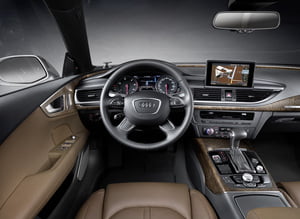There are few things more frustrating than needing to honk your car horn and having no sound come forth. Besides the fact that a horn is considered a safety feature on your car, sometimes you just want to use it to make a point regarding the careless or rude driving skills of another driver.
When the horn fails, it can mean a trip to the repair shop. However, if you do not mind investing a half hour or so to save a few dollars, many horn repairs can be effected cheaply as a do-it-yourself project.
First, you need to know a little about the anatomy of your cars horn system.
The simple process of pushing the horn button and hearing a loud honk involves more than it might seem. Obviously, you have one or two horn buttons located on the steering wheel of the car. On older cars, the horn switch was in one of several places. The center of the steering wheel has always been a favorite location. A chrome arc between the hub and rim of the steering wheel used to be a choice place for the horn button. Now, horn buttons are located beneath the vinyl coating on the steering wheel either near the center or on either side near rim.
The horn button is connected to the horns with one wire and a fuse with the other wire.
Running from the horn button, the wires run down the steering column to reach an exit under the dash of your car. From there, one wire will travel out to the horns. The other wire will pass over to the fuse panel and through the horn fuse. It will continue to make contact with the power supply from the battery or alternator. The wiring from the horns will go to the power supply to complete the circuit. Almost all cars and trucks have at least two horns under the hood to give both a louder sound and sometimes a blended sound from two different tones.
This makes four potential areas that could be at fault for a horn failure.
The first is the horn switch. If the switch goes bad, the horns will not sound or will sound continually. Next, a bad fuse could easily be the culprit. This is by far the simplest to find and fix. You could have a faulty wire or even a fuse link in the wire. Finally, the horns could be bad and need replaced. The trick is to find the area with the most likely failure and repair or replace it.
A bad fuse is easy to find and fix.
When working on any electrical problem in a car or building, always check the fuse first. If a fuse fails in a circuit, everything on the circuit will fail. A fuse or breaker can be located quickly and a burned fuse is easy to spot. If you find that a fuse is blown, replace it and see if the problem is resolved. If the fuse goes bad again immediately, you have another problem that must be resolved before the fuse is replace again.
If the fuse is not the problem, check the connections going to the horns.
Under the hood of your car, a number of electrical items have a back up fusing method called a fuse link. This is a short piece of wire that is in the circuit designed to fail at a load level approximately the same as the fuse. You can usually see when a fuse link has failed because the wire will be either separated or the coating melted and discolored at that point. Replacing the fuse link will not always fix the problem because it normally indicates that an overload is somewhere on the circuit. Most likely it will indicate a failing horn that is pulling too much power.
Check the connectors on each horn where the wires lead to the horns.
Many times the wires attach to the horns by means of a clip. These clips slide on and off relatively easily. It is possible that one or more of the clips was not installed properly and has come loose. If you are really lucky, all that is necessary is to plug the clip back on the horn, and you are in business. This is not usually the problem if there is no sound because the horns are wired so that one can fail and the other will still work. However, with a weak sounding horn that means only one horn is functioning, this could very well be the end of your search.
Make sure that the connections to the power supply are sound.
A loose ground or hot wire will cause the horns to fail to operate. If you are good enough to locate the right wires for the horns and can trace them without too much trouble, finding the connection to the power supply should not be difficult. Make sure that all of the connections are solid. If the horns still do not sound, you have another problem.
Get two pieces of wire long enough to reach from the battery to each horn.
Firmly attach one wire to each battery terminal and keep the other ends from touching each other. Pull them to one of the horns. Touch the exposed ends of the wires to the two connectors on the horn. If it sounds, the horn is good. Do this for each horn. If either of the horns fail to work, look at the horn to see if there is anything obvious that might need adjusted or repaired.
It is unlikely that both horns would fail at the same time.
You may not have realized that one horn had been bad for a while. When you heard the horn honk, it made you think all was well under the hood. When the second horn failed, it was time to do something. While this is rare, it can and does happen. You may have to just replace both horns to fix the problem.
If the problem proves to be in the horn switch, you may want to call on a professional for the repair work.
Most people are not skilled at removing a steering column to work on the horn. Because many steering wheels have an air bag in the middle, it can make it tricky for a novice or amateur to work on them successfully. A professional should be able to double check your diagnosis pretty quickly to verify a faulty horn switch. Less than an hour of labor is normally required to install a new horn switch. It will not be cheap, but it should not break the bank, either.





